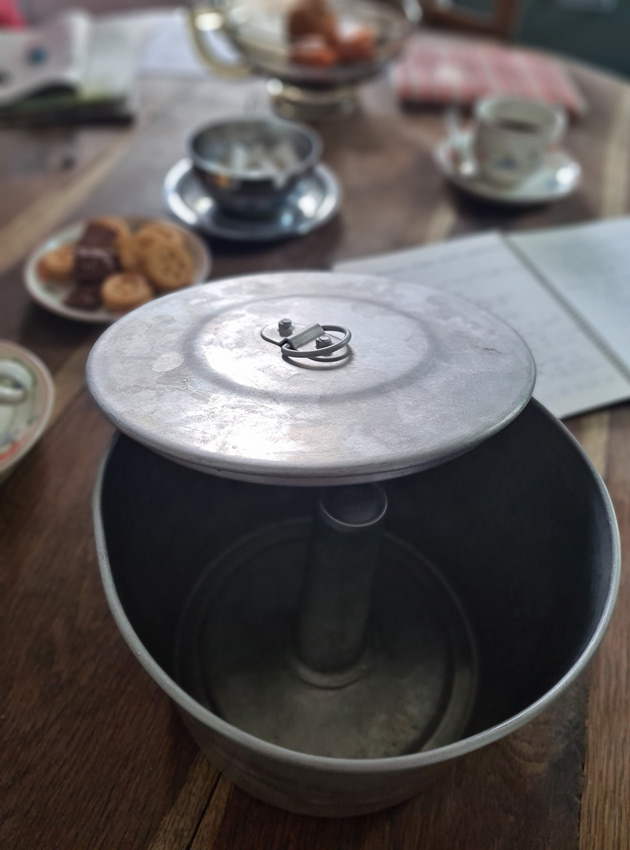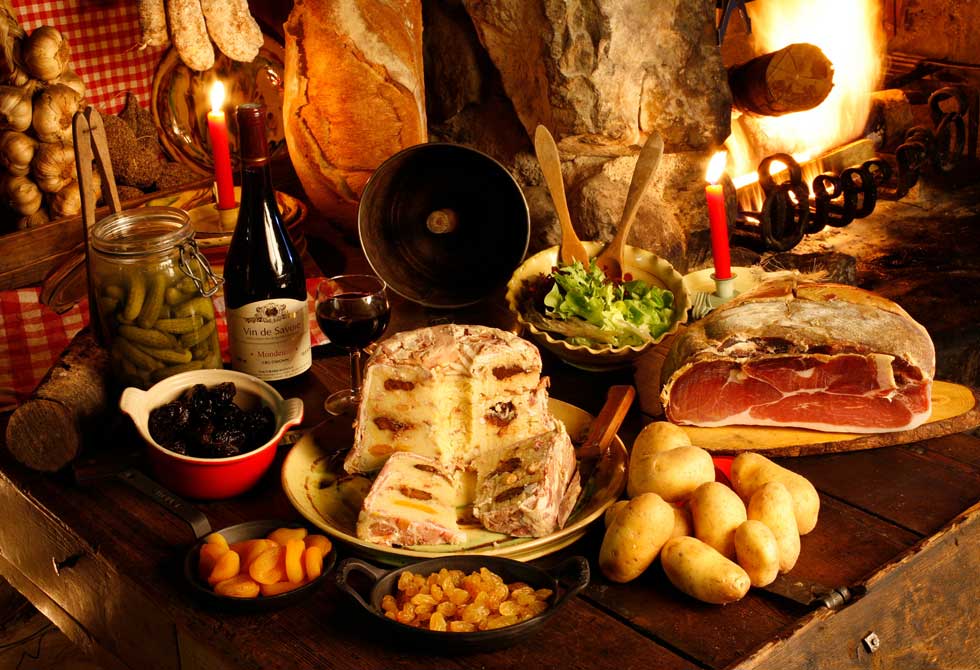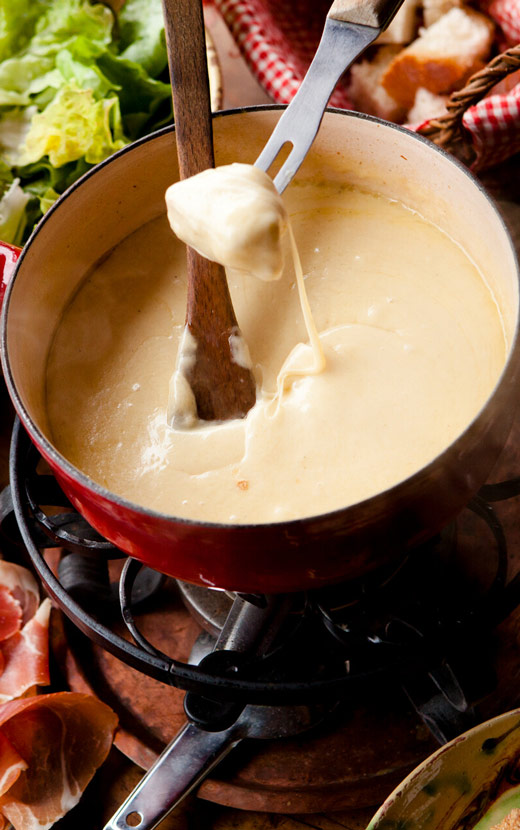
Inspiration
Farcement
A recipe with all the charm and flavor of yesteryearFor those unfamiliar with “farcement” (sometimes called “farçon”), it figures among the most iconic recipes found in the area (Savoie and Haute-Savoie).
A Sunday dish by tradition, the sweet-and-savory recipe for farcement comes straight from the Middle Ages and has stood the test of time, passed down from generation to generation as if a well-guarded secret.
Made with shredded potatoes, lard, and dried fruit (prunes, apricots, figs, or raisons depending on local tradition), farcement bears the shape of the unique mold it cooks in.

© Savoie Mont Blanc – Françoise Cavazzana
Referred to as a “rabolire,” the smooth metal mold with a hollow center gives farcement its “charlotte-shortcake” look.
While a rabolire not easy to find (although if you search a little, you just might find one), a mold for charlotte shortcake or kugelhopf will work. However, as you know, there is something about cooking just like our ancestors did so long ago that always seems to taste best.

© Gaëlle Tagliabue
Where exactly farcement comes from is not easy to determine since there are almost as many recipes as there are Savoyard families who continue to cook this traditional dish. For the purposes of this article, we decided to share one of the recipe’s many versions. The proof is in the pudding (or rather the “farcement”), since we had the chance to taste an incredibly delicious version of this traditional dish.
The recipe refined by Grandma Raymonde in Mt. Saxonnex is a gem filled with the flavors of yesteryear. By word to mouth, this fabulous recipe migrated from one side of the Aravis Mountains to the other before making its way to Annecy. While the recipe is not complicated, it does require a pinch of experience, a spoonful of know-how, and several cups of patience.

© Gaëlle Tagliabue
Farcement recipe by Grandma Raymonde
- Start by shredding 2kg of potatoes, preferably by hand to obtain the ideal small thin shred length (good luck). Strain and place the shreds in a large bowl.
- Melt a stick of butter (200g) and some lard, and then pour this mix into the mold. Make sure that you butter the inside of the mold, including the center part. In the large bowl, add the shredded potatoes, 6 eggs, 100g of smoked bits of ham, 1 liter of heavy cream, and 500g of prunes. Add salt and pepper as well, and then mix.
- Next take around fifteen slices of smoked bacon. These should be long enough to line the entire mold from top to bottom and slightly overlap the upper edge to be able to cover the top of the cake. Pour the mix from the bowl into the mold and then close it all up with the slices of smoked bacon.
- Put the mold cover on and then it in a water bath in a Dutch oven pot. Cook for no less than two hours (some recipes call for much longer). Slowly cook this dish on low heat. Long ago, farcement was prepared early in the morning, before mass, and left to slowly cook on a low fire. Time slowly but surely always does its job, allowing the mix to release into the air a hint of the upcoming meal.
You have to look far and wide to find a restaurant that cooks this almost forgotten recipe. While it takes time (yes, lots of it!) to prepare and cook, farcement represents the epitome of amazingly delicious dishes you can make using leftovers. This is probably why the recipe has so many different versions based on the kinds of dried fruits at hand the day you make it.
This traditional yet atypical dish in today’s world should be enjoyed the very day it is cooked. Cut farcement in slices like a cake, and eat it with a green salad on the side for a truly delicious meal!

© Savoie Mont Blanc – Françoise Cavazzana
Another story
Copyright:
- © Savoie Mont Blanc – Françoise Cavazzana
Journalist: Gaëlle Tagliabue
Translation: Darin Reisman
